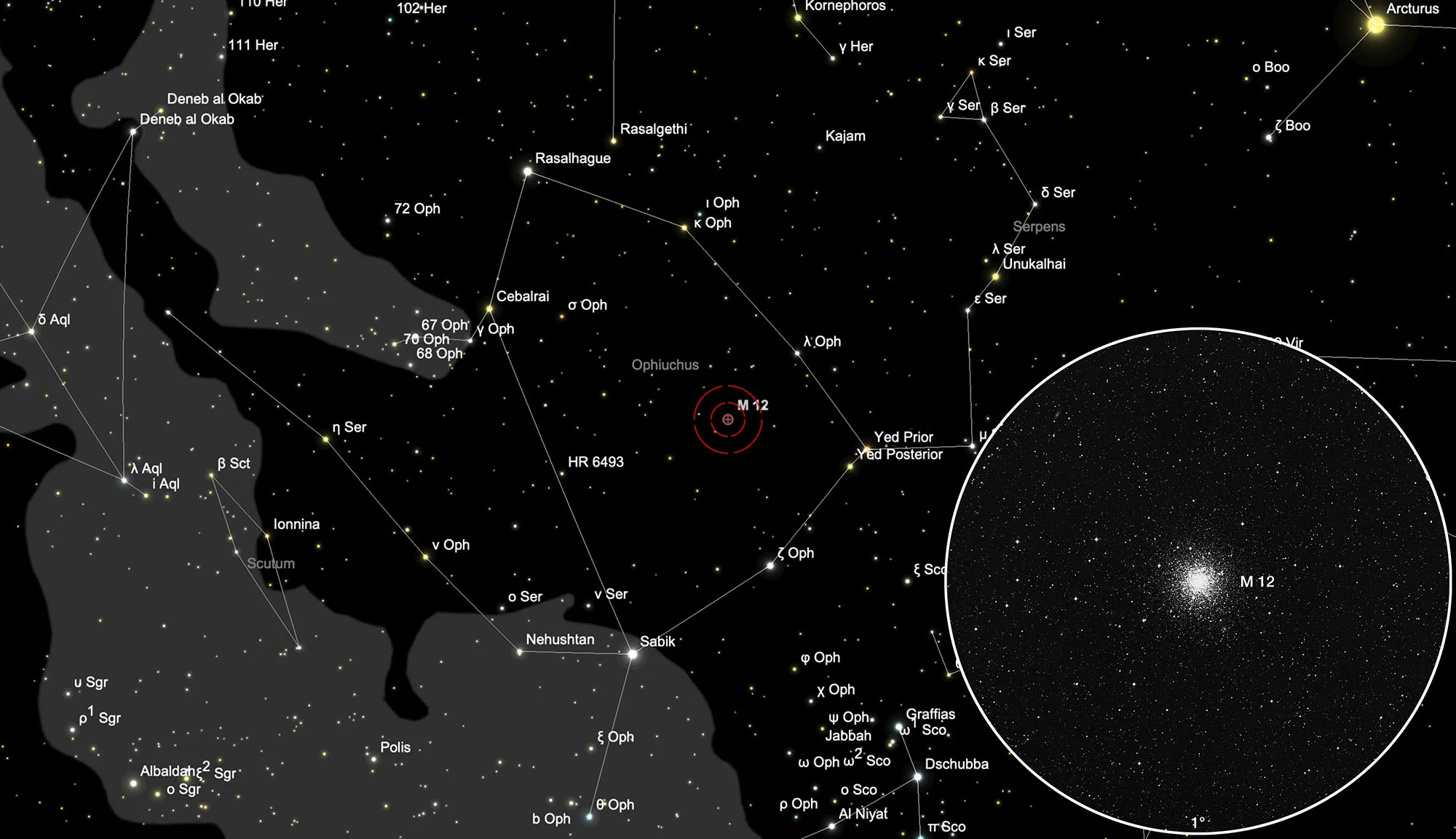Globular Cluster Messier 12

History
On 30 May 1764 Charles Messier discovered his twelfth object and noted: «Nebula discovered in Serpens, between the arm and the left side of Ophiuchus: this nebula contains no stars, it is round and its light is faint; near this nebula is a star of the ninth magnitude. Mr. Messier reported it on the second chart of the comet observed in 1769. Mém. Acad. 1775, pl. IX, reviewed on March 6, 1781.» [281]
About two decades later Sir William Herschel observed the objects found Messier and recognized the true nature of many of these «nebulae». He wrote: «The excellent collection of nebulae and clusters of stars which has lately been given in the Connoissance des Temps for 1783 and 1784, leads me next to a subject which, indeed, must open a view of the heavens. As soon as the first of these volumes came to my hands, I applied my former 20-feet reflector of 12 inches aperture to them; and saw, with the greatest pleasure, that most of the nebulae, which I had an opportunity of examining in proper situations, yielded to the force of light and power, and were resolved into stars. For instance the 2d, 5, 6, 10, 12, 13, 14, 15, 16, 19, 22, 24, 28, 30, 31, 37, 51, 52, 53, 55, 56, 62, 65, 66, 67, 71, 72, 74, 92, all which are said to be nebulae without stars, have either plainly appeared to be noting but stars, or at least to contain stars, and to shew every other indication of consisting of them entirely.» [27]
Physical Properties
The integrated spectral type of all stars in this globular cluster is F7. Published distances from M 12 vary from 16'000 to 24'000 light years. Presumably it is at the same distance as M 10. The true distance of these two clusters would then be about 2000 light years. M 12 approaches with a radial speed of only about 17 km/s. [4]
| Designation | NGC 6218 |
| Type | GCL (IX) |
| Right Ascension (J2000.0) | 16h 47m 14.5s |
| Declination (J2000.0) | -01° 56' 50" |
| Diameter | 16 arcmin |
| Visual magnitude | 6.1 mag |
| Metric Distance | 4.800 kpc |
| Dreyer Description | !! globular, vB, vL, iR, gmbM, rrr, st 10… |
| Identification, Remarks | h 1971; GC 4238; M 12; GCL 46 |
Finder Chart
The globular cluster Messier 12 is located in the constellation Ophiuchus (Serpent Bearer) approximately where the imaginary connecting lines between the stars κ - ζ Ophiuchi and β - Yed Prior (δ Ophiuchi) cross.
Visual Observation
400 mm Aperture: The globular cluster M 12 is not easy to find, especially when the sky is so milky and bright that you can barely make out the stars of the Serpent Bearer, but once you find it in the 21 mm Ethos eyepiece, you are rewarded for your search with beautifully resolved stars all the way to the core region. With increasing magnification, more stars become visible in the core region. — 400 mm f/4.5 Taurus Dobsonian, Glaubenberg, 17. 6. 2023, Bernd Nies
